A visit to Little Sparta
I first heard about Ian Hamilton Findlay’s garden
Little Sparta while at college. The combination of text, sculpture and landscape was unlike anything I’d seen
and I’ve been planning to see it ever since. Nearly 25 years later, I finally managed to make the trip and the wait was well worth it.
It’s not easy to get to and is only open a few afternoons a year. I went on the last afternoon of the year in late September and fortunately the weather was glorious.
I walked the half-mile from the car park to the garden and found an elderly gentleman there. We chatted while we waited for someone to arrive to take our money. He told me he had grown up nearby and knew the garden before Findlay bought it when it was still a working farm. After school, he would help the postman by riding on the running boards of his van and hop off to open and close the gates of the farm. He had not visited since and would not visit again as his emphysema was getting worse and he would not be able to make the walk up the hill.
Eventually, someone arrived to let us in; I left the elderly gentleman with her and began exploring the garden, I had it all to myself. It was much bigger than I imagined and there were far more works than I expected, at every turn something else to discover.
In cul-de-sac of hedge I came across a bench with the line “a lane need not meander”; the lettering beautiful, the words enigmatic, the landscaping magical. In three hours I bearly saw another soul as I wandered to every corner of the garden.
Since Findlay’s death in 2006 the garden is no longer being added to. Some of the inscriptions, particularly the wooden ones, are becoming worn, loosing their definition. The stone ones are being colonised by moss and lichen. Although there are no new works, the garden is still a dynamic, changing artwork, a tribute to Findlay’s artistic vision and the skills of the craftsmen that helped him realise it.
I'm not sure if I’ll go back, the memory of that perfect afternoon will last a lifetime. But maybe in another 25 years I'll go and see how well we’ve both aged.
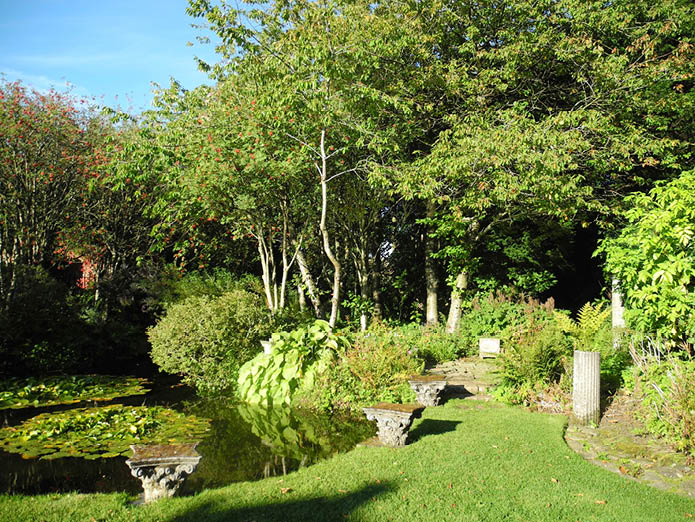
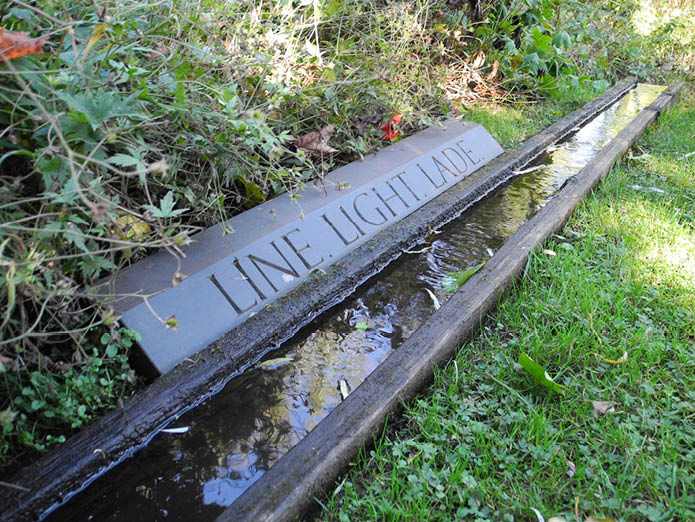
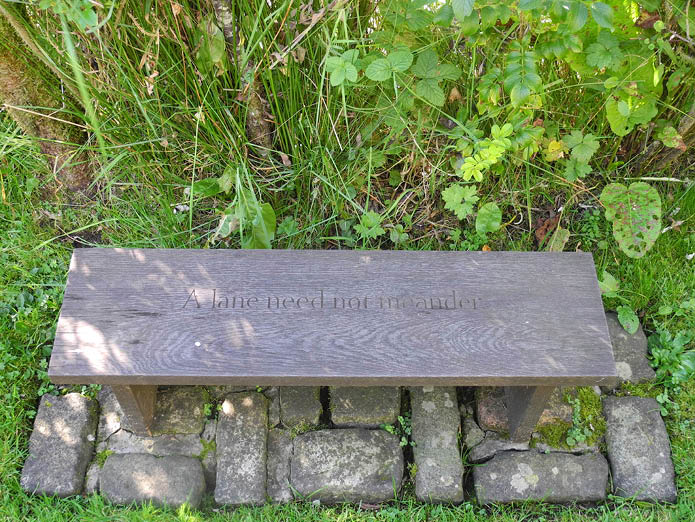
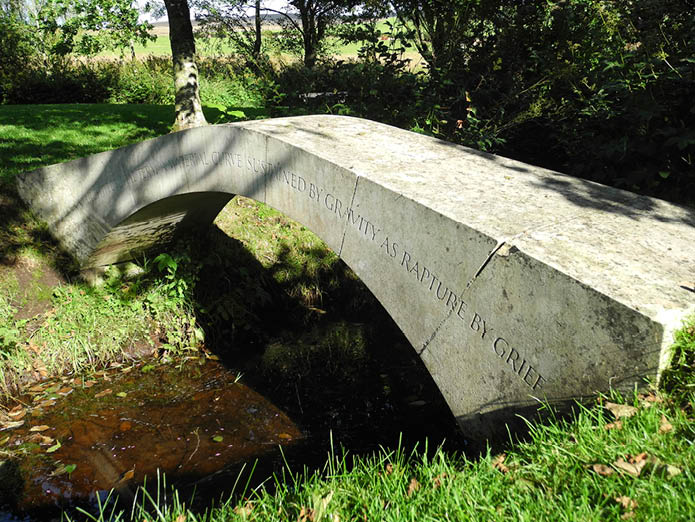
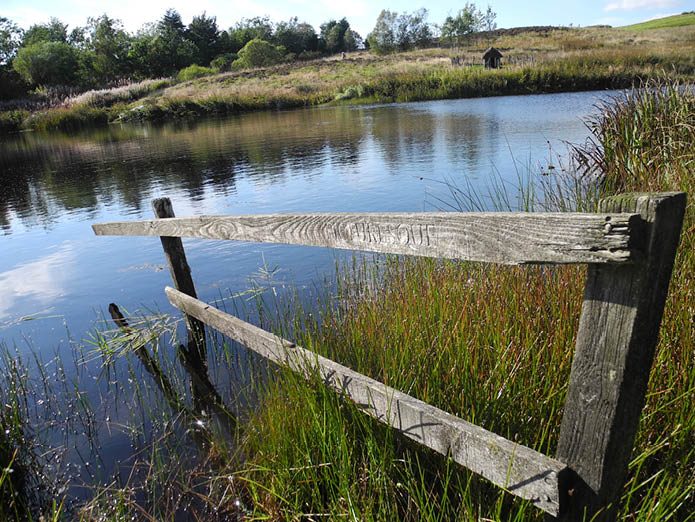
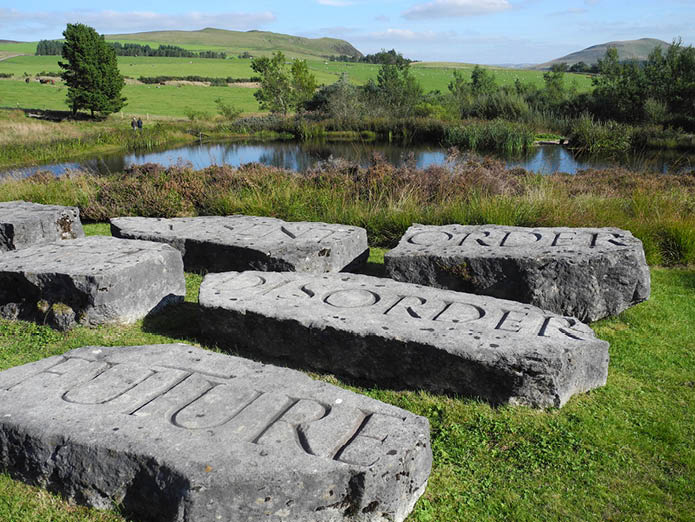
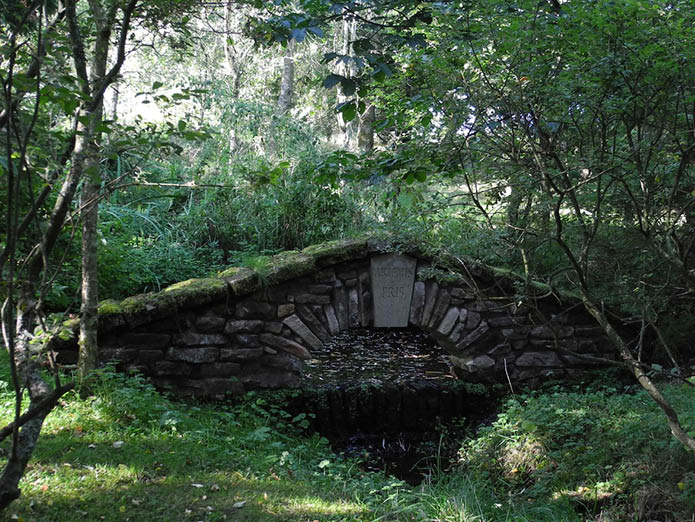
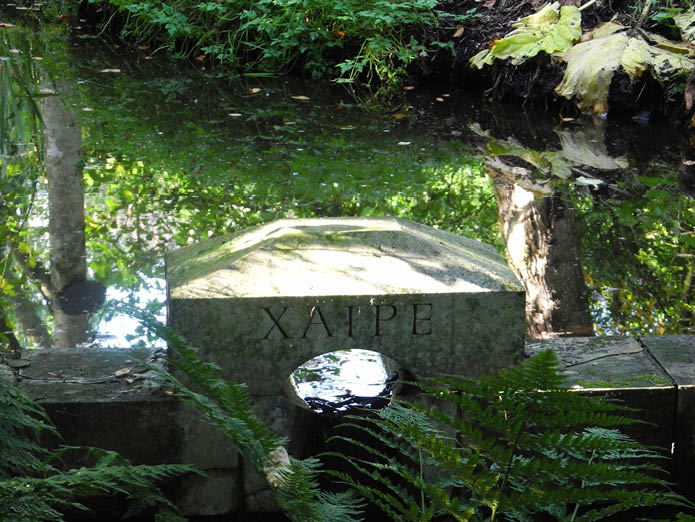
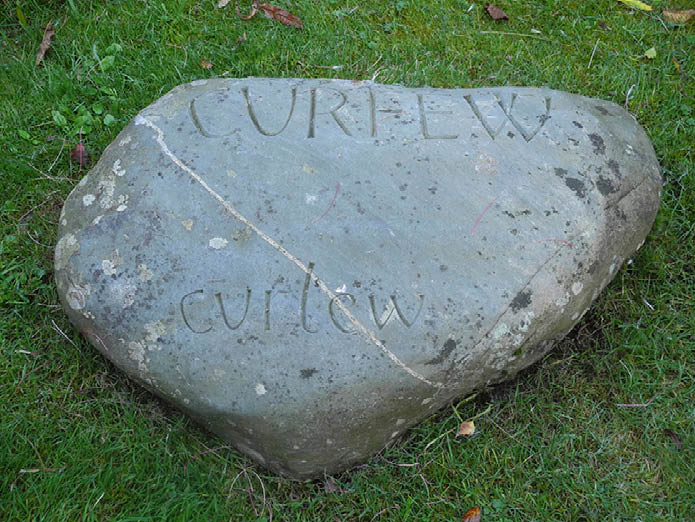
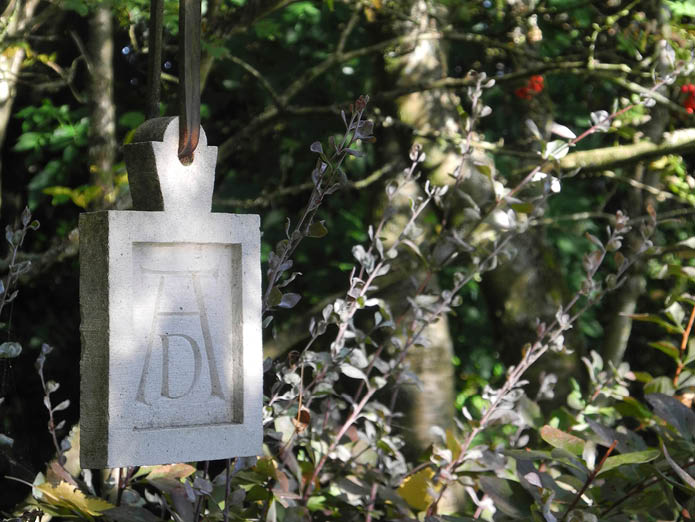
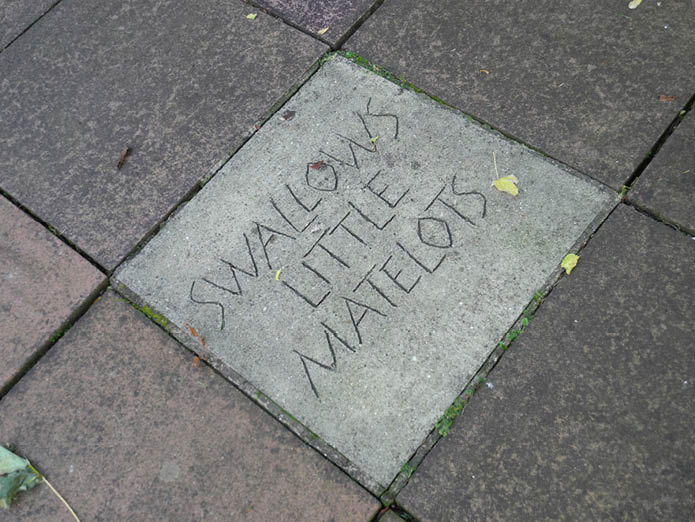
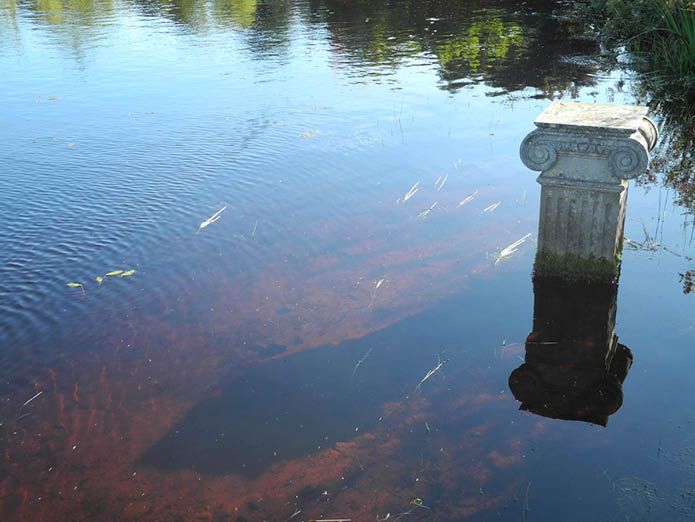
11 - 12
<
>